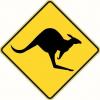I've gained a bit of skill using hand planes. The most common operations for me are flattening a board face and making and flat edge square to a face. In both instances, I always create a bow (center higher) in the work piece. It's become a normal practice for me to work the plane in the center to remove the bow and take one last full pass. It seems to me that I ought to be able to work such that I do not create the bow in the first place. I can plane an edge square to another, so there's no reason I shouldn't be able to plane flat
I get this with a #4, ,5, 6 and 7 and I get it with both faces and edges. So I'm sure it's something in my technique. I try to place more pressure at the front at the beginning, even pressure in the center and to the rear at the end but clearly I'm doing something wrong.






 Reply With Quote
Reply With Quote






